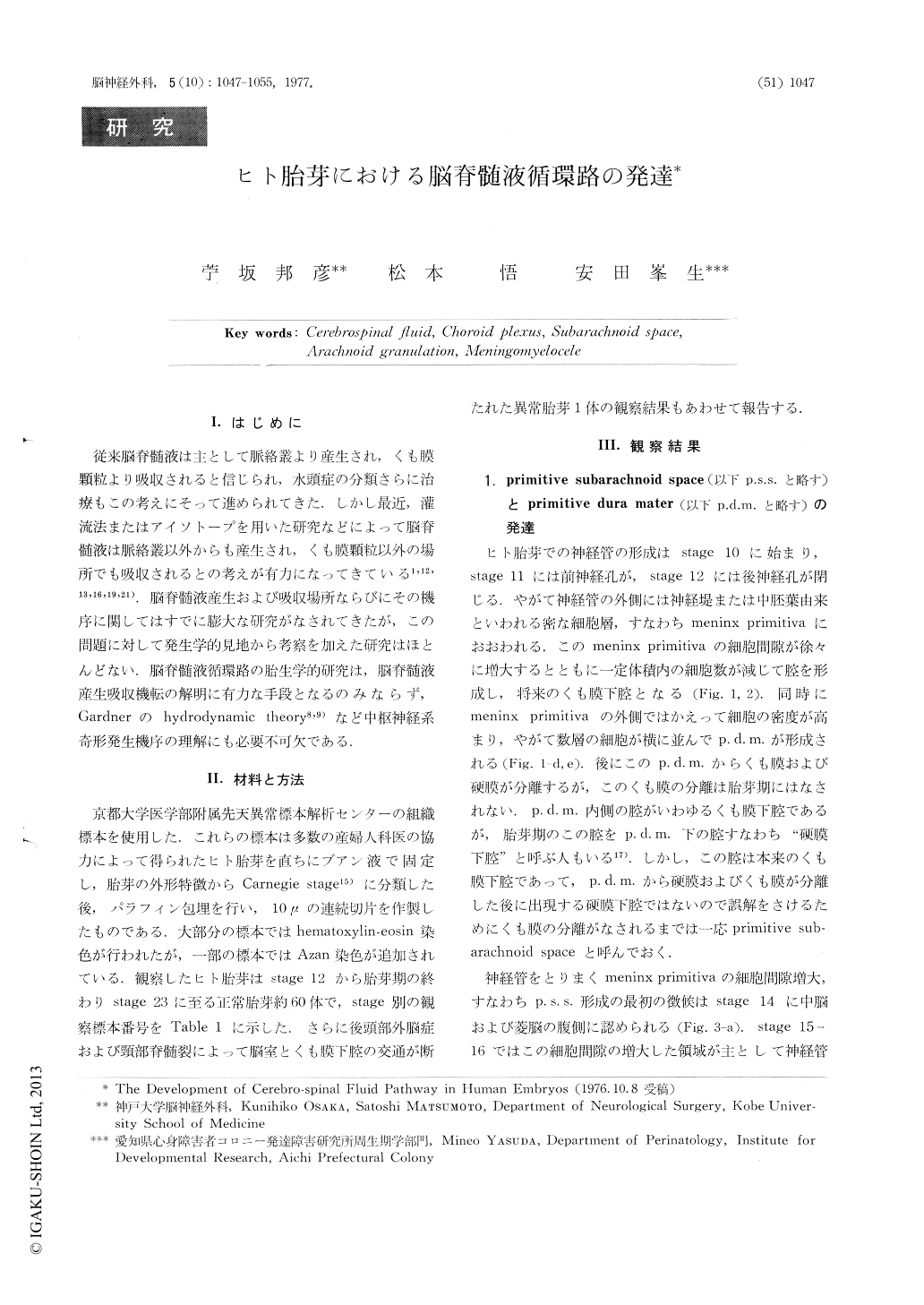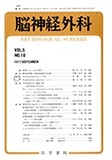Japanese
English
- 有料閲覧
- Abstract 文献概要
- 1ページ目 Look Inside
Ⅰ.はじめに
従来脳脊髄液は主として脈絡叢より産生され,くも膜顆粒より吸収されると信じられ,水頭症の分類さらに治療もこの考えにそって進められてきた.しかし最近,灌流法またはアイソトープを用いた研究などによって脳脊髄液は脈絡叢以外からも産生され,くも膜顆粒以外の場所でも吸収されるとの考えが有力になってきている1,12,13,16,19,21).脳脊髄液産生および吸収場所ならびにその機序に関してはすでに膨大な研究がなされてきたが,この問題に対して発生学的見地から考察を加えた研究はほとんどない.脳脊髄液循環路の胎生学的研究は,脳脊髄液産生吸収機転の解明に有力な手段となるのみならず,Gardnerのhydrodynamic theorys8,9)など中枢神経系奇形発生機序の理解にも必要不可欠である.
The early development of the subarachnoid space, thechoroid plexus, and the arachnoid villi was studied in 60 normal human embryos ranging from Carnegie stage 12 to 23. The embryos were fixed in Bouin's fluid, paraffin-embedded, serially sectioned and stained with hematoxylin-eosin and Azan. One abnormal human embryo with exencephaly and myeloschisis in the high cervical cord was added for the study. A primitive subarachnoid space (future subarachnoid space) is first distinguishable as cavity formation within the meninx primitiva in the areas ventral to the middle brain vesicle at stage 14.

Copyright © 1977, Igaku-Shoin Ltd. All rights reserved.


